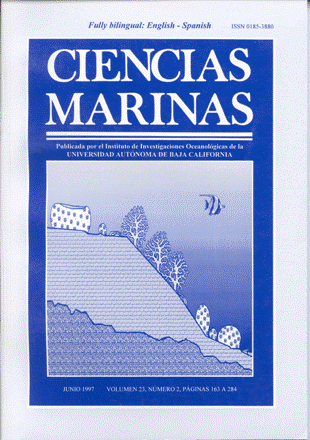Effect Of The Type Of Precipitation On The Process Toobtain Sodium Alginate: Calcium Alginate Method And Alginic Acid Method
Main Article Content
Abstract
Se estudió la etapa de precipitación en el proceso de producción de alginato de sodio, a partir del alga Macrocystis pyrifera, para encontrar el proceso mas económico y las mejores condiciones para manejar el producto. Se compararon dos procesos conocidos de obtención de alginato de sodio: el proceso de alginato de calcio, en el cual la precipitación se realiza con cloruro de calcio, y el proceso de ácido algínico, donde la precipitación se obtiene con ácido clorhídrico. El rendimiento del producto final fue estadísticamente igual para ambos procesos, mientras que la viscosidad del alginato fue mayor en un 33% al precipitar con cloruro de calcio. En el proceso de alginato de calcio, se reduce en 90.8% el consumo de ácido clorhídrico y 53.1% el consumo de alcohol, con respecto al empleado en la precipitación con ácido. Aunque el método de alginato de calcio tiene un gasto adicional de cloruro de calcio, el costo total de reactivos es menor que el costo del método de ácido algínico. En un segundo experimento se estudió la reducción de la cantidad de cloruro de calcio, variando la concentración entre 6.76 y 3.61 miliequivalentes de cloruro de calcio por gramo de alga seca utilizada (meq/g); se tuvo como variable de respuesta el rendimiento, la viscosidad, la cantidad de calcio retenido en el producto final y la consistencia del precipitado para su manejo. Se encontró que la concentración mínima de cloruro de calcio que se puede emplear, sin afectar estas variables, fue de 4.5 1 meq/g. Esta cantidad representa una reducción de 19.3% respecto a la cantidad de cloruro de calcio utilizada en el tratamiento testigo (6.76 meq/g).
The precipitation step of the process to obtain alginate from the alga Macrocystis pyrifera was studied in order to find the most economical process and best conditions to handle the product. We compared the two processes known to produce alginate: the calcium alginate process, in which precipitation is carried out with calcium chloride, and the alginic acid process, in which precipitation is obtained with hydrochloric acid. The yield was statistically the same in both processes, but the viscosity of the alginate was 33% higher in the precipitation with calcium chloride. The calcium alginate process reduced by 90.8% the consumption of hydrochloric acid and by 53.1% the consumption of alcohol, compared with the acid precipitation method. In spite of the additional cost of calcium chloride in the calcium alginate method, the total cost is lower than the cost of the reagents used in the alginic acid method. In a second experiment, the reduction of the amount of calcium chloride was studied. The calcium chloride concentration was changed from 6.76 to 3.61 milliequivalents of calcium per gram of dry alga used (meq/g). The response variables were yield, viscosity, amount of calcium retained and consistency of the precipitate. It was found that the minimum concentration of calcium chloride that can be used without affecting these variables was 4.51 meq/g. This amount reduced by 19.3% the amount of calcium chloride, compared with the amount used in the control treatment (6.76 meq/g).
The precipitation step of the process to obtain alginate from the alga Macrocystis pyrifera was studied in order to find the most economical process and best conditions to handle the product. We compared the two processes known to produce alginate: the calcium alginate process, in which precipitation is carried out with calcium chloride, and the alginic acid process, in which precipitation is obtained with hydrochloric acid. The yield was statistically the same in both processes, but the viscosity of the alginate was 33% higher in the precipitation with calcium chloride. The calcium alginate process reduced by 90.8% the consumption of hydrochloric acid and by 53.1% the consumption of alcohol, compared with the acid precipitation method. In spite of the additional cost of calcium chloride in the calcium alginate method, the total cost is lower than the cost of the reagents used in the alginic acid method. In a second experiment, the reduction of the amount of calcium chloride was studied. The calcium chloride concentration was changed from 6.76 to 3.61 milliequivalents of calcium per gram of dry alga used (meq/g). The response variables were yield, viscosity, amount of calcium retained and consistency of the precipitate. It was found that the minimum concentration of calcium chloride that can be used without affecting these variables was 4.51 meq/g. This amount reduced by 19.3% the amount of calcium chloride, compared with the amount used in the control treatment (6.76 meq/g).
Downloads
Download data is not yet available.
Article Details
How to Cite
Arvizu-Higuera, D., Hernandez-Carmona, G., & Rodriguez-Montesino, E. (1997). Effect Of The Type Of Precipitation On The Process Toobtain Sodium Alginate: Calcium Alginate Method And Alginic Acid Method. Ciencias Marinas, 23(2), 195–207. https://doi.org/10.7773/cm.v23i2.796
Issue
Section
Research Article
This is an open access article distributed under a Creative Commons Attribution 4.0 License, which allows you to share and adapt the work, as long as you give appropriate credit to the original author(s) and the source, provide a link to the Creative Commons license, and indicate if changes were made. Figures, tables and other elements in the article are included in the article’s CC BY 4.0 license, unless otherwise indicated. The journal title is protected by copyrights and not subject to this license. Full license deed can be viewed here.

